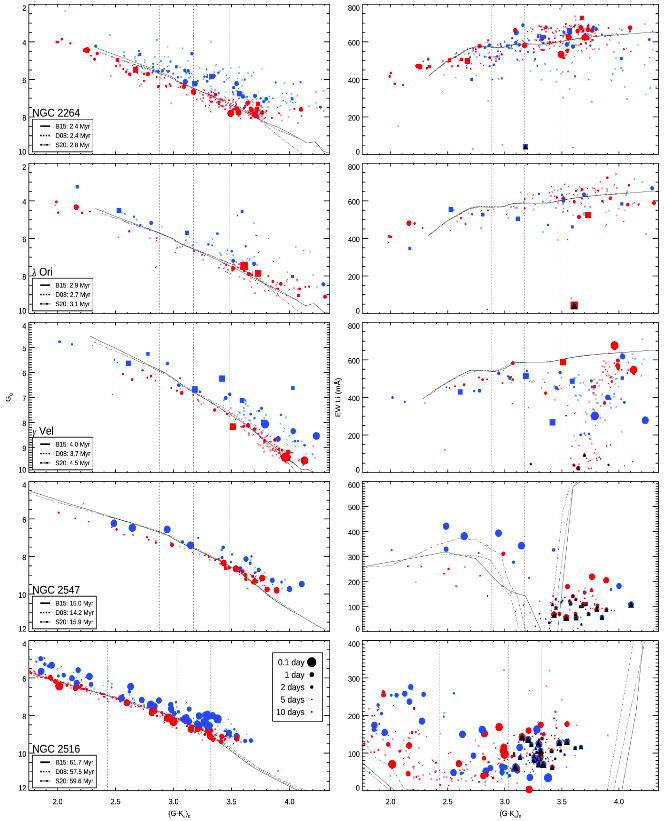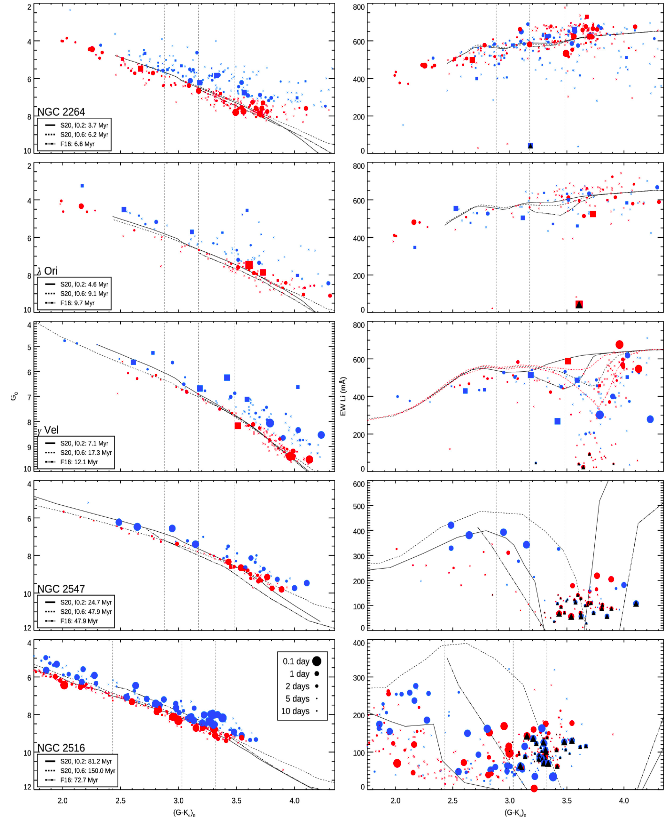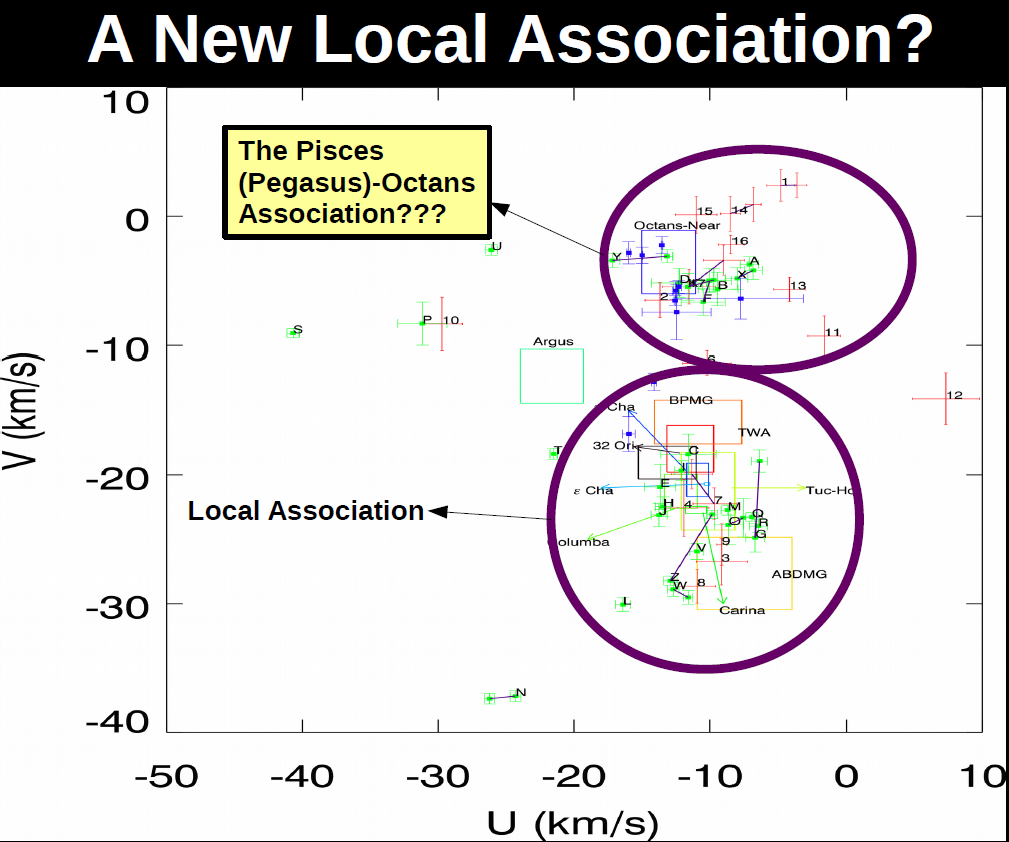As stars evolve from their nascent cloud, they are still undergoing gravitational contraction prior to reaching hydrostatic equilibrium. This phase, known as the "pre-main sequence" (pre-MS) is an important evolutionary stage lasting approximately 30 Myr for Solar-type stars, up to several hundreds of Myr for low-mass M-stars. During pre-MS evolution stars undergo large changes in stellar angular momentum and deplete light elements from the surface (such as Li), in the epoch where both disks and planets form and evolve.
A complete understanding of the physical processes that lead to the variety of observed features amongst stars on the pre-MS necessitates a vital measurement: the age of the star. The ages predicted by evolutionary models during pre-MS evolution are at odds with one another, with age discrepancies from isochronal modelling as much as a factor of ~2.
I am currently working on testing how capable various evolutionary models are at simultaneously fitting colour-magnitude diagrams (CMD) and Li-depletion as a function of colour using 5 open clusters approximately aged between 5 and 150 Myr (each at separate stages in their evolution). The stars in each cluster are selected as high-probability members based on their 3D positions and velocities, measured using a combination of tangential velocities and positions from Gaia DR2 data and radial velocities from the Gaia ESO Survey (GES). Lithium measurements are available in GES, providing a homogeneous data-set to work with to compare cluster distributions in a G versus G-Ks CMD and an Li equivalent width (EWLi) versus G-Ks plot with models that incorporate a) standard physical inputs and b) non-standard inputs, which attempt to take into account rotation, surface magnetic-fields and/or dark star-spots.
The method is simply to find a best fit isochrone to the CMD, and apply this fit to the Li-depletion pattern. The two large plots below show the results of the fitting from (top) standard models and (bottom) non-standard models. It is striking that the standard models provide much younger fits to the CMD, and vastly under-predict how much Li has depleted. It is clear that the non-standard models provide much better fits, both to the shape of the CMD and in predicting the Li depletion. This shows strong evidence that standard isochronal models may be underpredicting pre-MS ages and that factors acting to radially inflate stars are crucial to predicting reliable ages based on evolutionary models.<\p>
We are also conducting an empirical analysis of how rotation affects both of these distributions by incorporating my "TESSilator": a pipeline which extracts lightcurves from TESS, measures rotation periods and assesses their reliability down to magnitudes as faint as G=17.

Left: Absolute G versus G-Ks CMD for 5 clusters. Red objects represent the lower half of the CMD and most likely represent single stars. Right: EWLi versus G-Ks. The standard models provide poor fits to the CMD shape/slope and grossly underpredict Li- depletion.









